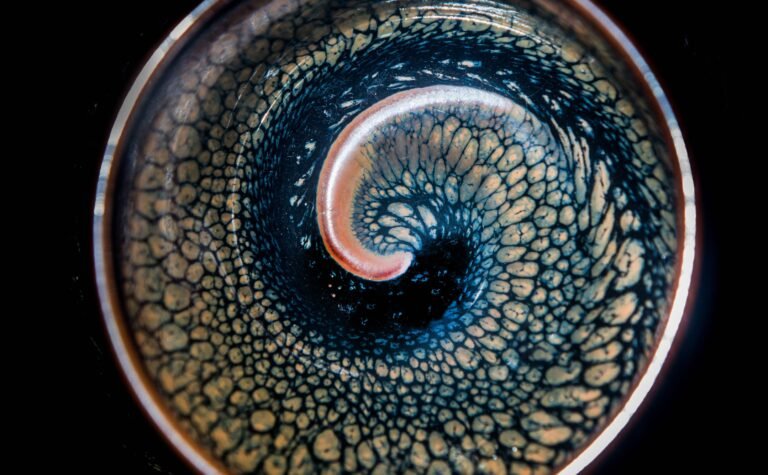Tenmoku teacups captivate with their understated beauty and intricate glazes—a true fusion of minimalism and artistic depth. While their shapes may appear simple, their visual impact is profound. It’s no surprise they’re treasured worldwide! But how much do you truly know about these enigmatic pieces? Below are five fascinating facts about Tenmoku teacups:
No Two Teacups Are the Same
Tenmoku teacups are celebrated not only for their elegance but also for their individuality. Each cup’s glaze, crafted from feldspar, limestone, and iron oxide, transforms uniquely during firing. The cooling speed significantly affects the glaze’s hue: faster cooling yields deeper blacks. Countless variables in the heating and cooling process make it impossible to predict the final result, ensuring every piece is one-of-a-kind.
Tenmoku is Named After a Mountain
The term Tenmoku originates from Tianmu Mountain (天目山) in eastern China, home to a temple where iron-glazed tea bowls were first used. In Mandarin, it’s tiānmù (天目), while in Japanese, it becomes tenmoku. Translated as “Heaven’s Eye,” the name likely reflects the mountain’s breathtaking vistas. Though the style emerged during China’s Song Dynasty as Jian Zhan, it gained global recognition under its Japanese name.
Tenmoku Teacups Are Highly Prized
Among the most coveted variants are Yohen Tenmoku tea bowls. Only three exist today, all preserved in Japan. In 1918, one was valued at 168,000 Japanese yen (approximately 1,530 atthelime).Adjustedforinflation,itsworthtodaywouldsoartoaround15.5 million! While not all Tenmoku cups command such astronomical prices, their cultural and artistic value remains undeniable.
Tenmoku Teacups Come in Many Colors
Originally, Tenmoku cups featured dark glazes to contrast the pale hues of tea. Today, deep browns and blues remain popular, but modern artisans produce them in vibrant shades like red, green, orange, and yellow. This evolution showcases the versatility of the ancient technique while honoring its roots.
A Shared Chinese and Japanese Heritage
Tenmoku teacups symbolize a cultural bridge between China and Japan. Historical records note that in 1406, the Yongle Emperor of China’s Ming Dynasty gifted ten Jian ware bowls to Japan’s shōgun Ashikaga Yoshimitsu. These treasures became icons of Japanese tea culture. With their mesmerizing glazes and timeless charm, Tenmoku cups continue to captivate collectors and enthusiasts alike.
From their serendipitous glazes to their cross-cultural legacy, Tenmoku teacups are far more than vessels—they’re masterpieces of history and artistry.



